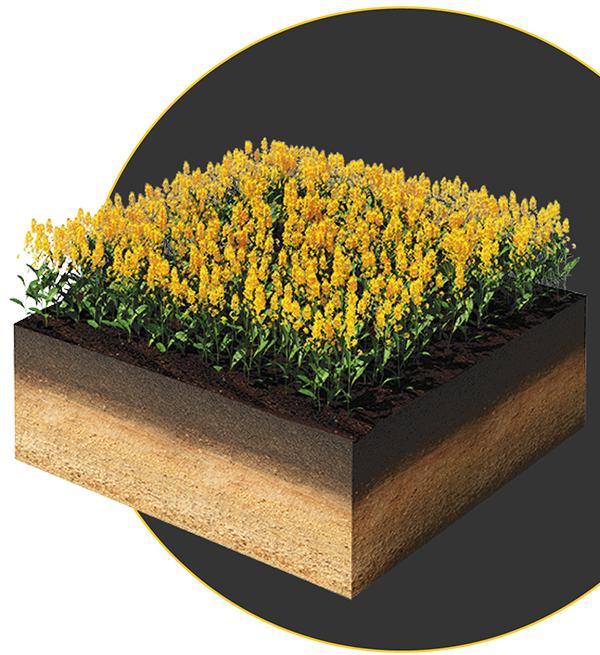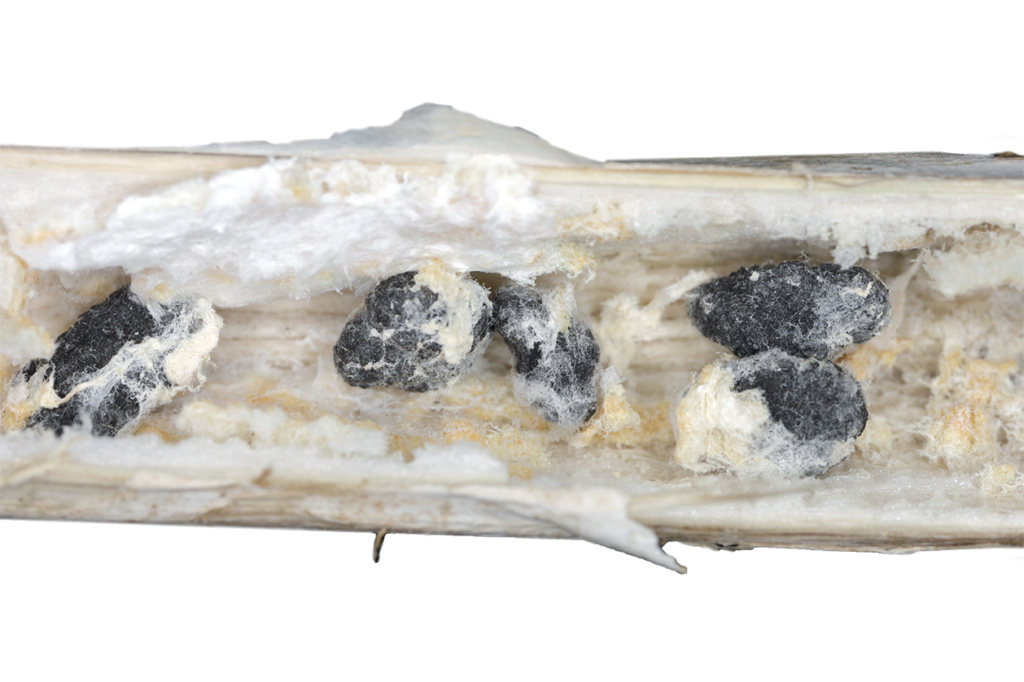“Knowledge is essential
for growing oilseed rape!”

Brassica napus – Oilseed rape
- Valuable golden oil plant
- High field hygiene requirements
- Often struggles with fungal diseases
Worth knowing
Oilseed rape belongs to the cruciferous family and plays an important role in many farmers’ cultivation plans, as it can generate a high monetary value as a preceding crop. However, the beautiful yellow oil plant is not very self-tolerant and is therefore particularly susceptible to diseases such as white mould or root neck rot and stem rot. If the causes of these diseases are not combated with effective measures, the yield level can drop considerably.
Old and volunteer rape
If you are not careful, old and volunteer oilseed rape can also be your undoing. Old oilseed rape maintains infection chains and shortens the cultivation break in the crop rotation. In contrast, volunteer oilseed rape leads to an overly dense crop and can thus significantly impair the quality of the harvest. The facts are clear: Oilseed rape is a demanding crop that presents a number of challenges that need to be overcome.
Volunteer oilseed rape
Even if the rapeseed harvest takes place under ideal conditions, there are always yield losses. If the rape is harvested too late or a storm gets in the way, these losses can even be quite high.
Dormancy disturbance
After sowing, the rape seeds enter a primary dormancy phase, which must be disturbed using various tricks to encourage the seeds to germinate. The best germination conditions for the small rapeseed grains are created when they are close to the surface and not buried too deep.
However, if the seeds are buried too deeply, they fall into secondary dormancy (quiescence). They then take even longer to germinate and appear in the next crops as troublesome volunteer rape. Very deeply buried rape seeds can remain able to germinate for up to 10 years.

What can you do about it?
Mulching! The mulcher sucks up grains from the soil, shreds the crop residues and presses them back down. As the mulcher does not interfere with the soil, the seeds are not pressed too deeply into the soil, thus preventing secondary dormancy.
Another plus point: Unripe pods are also opened so that the otherwise unripe seeds can germinate optimally under the mulch layer.

Sclerotinia, phoma and other fungal diseases
Unfortunately, the rape plant is not particularly resistant to fungal diseases of any kind. Hardened fungal bodies, known as sclerotia, can persist in the soil for up to 10 years and cause long-term damage to oilseed rape crops. Although fungicides are available to combat such fungi, they are highly controversial in terms of bee protection.
The mulcher as an all-purpose weapon – also against fungi
Mulching shreds crop residues and accelerates the rotting process. In addition, the rapeseed stalks are shredded and larger microorganisms can attack and combat the exposed sclerotia.
Soil preparation
Mulching also offers advantages for new sowing after the rapeseed harvest. The intensive shredding of the crop residues means that they can no longer lead to clogging or poor placement of the new seed. The oilseed rape has worked hard for almost a whole year up to its harvest and has created an optimum soil structure for the following crop, which is not destroyed by mulching. This makes a second stubble fall after mulching possible, and ultra-shallow soil preparation without glyphosate becomes practicable.
